Five Advantages of Being a PAL Gamer
March 13th, 2008

This article was originally titled “The Top 10 Advantages of Being a PAL Gamer” but as you might have guessed I fell short at five.
There is a long tradition in the video game industry with consumers and the PAL encoding system. That is people whom live in PAL territories (that is Europe, Australia, New Zealand among others) more often than not end up drawing the short straw. Unlike our NTSC counterparts it often takes a long time for new technology to reach our shores and even when it does our price is marked up, we have lower distribution numbers and often receive modified/downgraded content. Basically it is the manufacturer’s way of telling us that we are simply not a priority for them.
On the rare occasion though us PAL gamers might be treated to something that trumps our American and Japanese friends. These special treats are rare cases indeed, thinking up even a measly five perks has been a formidable challenge. But the advantages are there, just a little hard to find. ^_^
I’d also like to thank the forum members over at PALGN whom suggested a few ideas and helped with the brainstorming process.
Early/Exclusive Releases
Although it had taken a long time for this trend to set in, occasionally in the industry you will notice that some PAL (especially European and Australian) games are released a few days earlier than their respective American counterpart. Fifteen years ago, excluding European developed games this trend was not existent but in the past 6 years early European releases have taken off and continue to occur quite frequently.
There are a couple of reasons as to why this situation is turning around. Firstly the increase of European game development. Take a flick through the back of any EDGE magazine and you will notice just how many AAA developers are situated in the UK. Then there is the strength of the Playstation brand in PAL territories.
I could fill a whole separate article on the latter point but I will try to be brief here. Basically for years game companies had neglected the PAL markets. When the Playstation was produced, the situation started to slowly change. Sony actually viewed and treated the PAL market for what it was; a solid, viable area for strong game sales. Hence it didn’t take much for Sony to become and still maintain the European market with it’s Playstation brand.
Years later, prior to the release of the Gamecube, Nintendo Europe was noticing slow adoption rates of Nintendo consoles compared to other territories. NOE representatives admitted that the UK markets had been previously neglected by Nintendo (release dates particularly) and in an attempt to turn the tides they changed the way that they viewed Europe and PAL territories. As a result the UK started to see several earlier releases for significant Gamecube and GBA titles, some games even launched first in Europe and then to the rest of the world. In the meantime Phil Harrison (of Sony Computer Entertainment Europe) pushed for a greater emphasis on mass market Playstation 2 devices (Eye Toy, Buzz, Singstar etc.). This payed off for Sony and these games were and still are a huge success in the UK and Australia. The success of these titles (as well as Nintendo’s new found interest in Europe) ensured that earlier PAL releases would continue to occur and have done so ever since.
Along with this, PAL territories do occasionally receive PAL exclusive titles and they are listed as well:
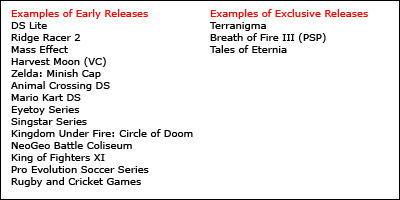
Improved Box Art
As standard, PAL games should include English, French, German, Spanish and Italian as optional languages to accommodate the European release. Because PAL is the standard for other countries outside of Europe this means that these counties have to wait for the localization to take place as well. This is why our games are delayed so frequently for so long.
During this time of localization some developers seize the opportunity to make improvements on their game. One of the easiest improvements is to redesign the game’s boxart and make it better. So the following are examples of this done well:
NTSC Left, PAL Right
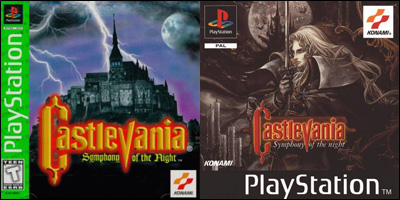
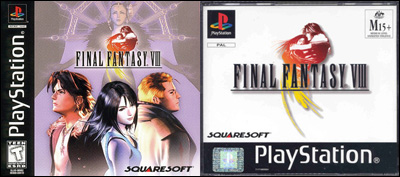

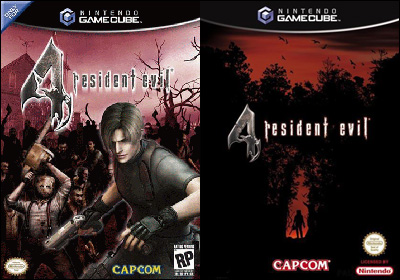
Additional Bonus Content
Continuing on from the previous point the delay created by localization allows developers to further fine tune and better their games for a PAL release. Generally the result of this is the removal of some very minor glitches. Occasionally additional content and much more significant tweaks take place. This has included additional levels and characters, on the whole though the main gameplay code is left alone. In several cases I have noticed that this is a result of critical feedback from the press.
The Dragon Ball Z Tenkaichi series is a recent example of a game that has seen additional PAL content. There are many other examples most of which only contain minor updates and are difficult to document.
Some Higher Resolution Games
 The PAL television format is superior to the NTSC television format, displaying an additional 96 lines per picture to make a total of 576 compared to an NTSC picture of 480 lines. What this means is that if converted correctly PAL games can take advantage of this higher resolution. This point was relevant last generation with first party Nintendo games, some first party Sony games and the odd PS2 and Xbox game receiving a higher resolution conversion.. This is why some of our games had a sticker like this on them:
The PAL television format is superior to the NTSC television format, displaying an additional 96 lines per picture to make a total of 576 compared to an NTSC picture of 480 lines. What this means is that if converted correctly PAL games can take advantage of this higher resolution. This point was relevant last generation with first party Nintendo games, some first party Sony games and the odd PS2 and Xbox game receiving a higher resolution conversion.. This is why some of our games had a sticker like this on them:

I suspect that the improved conversions by Sony and Nintendo reflects their aforementioned attitudes towards PAL markets. Providing us with a superior product in exchange for a delayed game.
Sharing the NTSC-J SNES Design
The most visually distinct difference between the two territories is the Super Nintendo console. For some reason Nintendo of America decided to modify the Japanese console design of the SNES for the American release. In turn physically enforcing regional lockout. The American SNES redesign has several stand out differences to its PAL brother; the console is lighter in colour and squarer in design. An ugly purple colour replaces the aesthetically pleasing primary colours of the controller’s face buttons. Furthermore the casing of the American SNES is known to turn yellow over time.
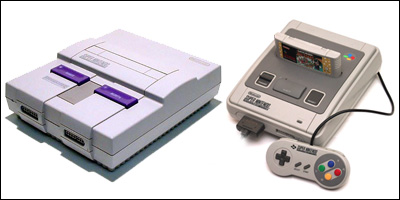
Beauty and the Beast
I’m going to be blunt for a second and express my honest opinion. The American SNES looks absolutely fowl and completely unappealing. This is likely why many publications tend to steer clear of photo referencing the American system, instead focusing on the Japanese or PAL design.



 Game Design Companion: A Critical Analysis of Wario Land 4 - $7.99
Game Design Companion: A Critical Analysis of Wario Land 4 - $7.99 Level Design: Processes and Experiences
Level Design: Processes and Experiences Speed Boost: The Hidden Secrets Behind Arcade Racing Design - $5.99
Speed Boost: The Hidden Secrets Behind Arcade Racing Design - $5.99 Adventures in Games Analysis: Volume I - $5.99
Adventures in Games Analysis: Volume I - $5.99







